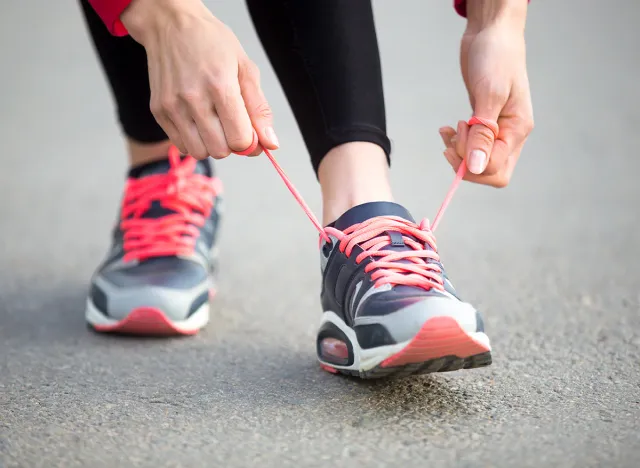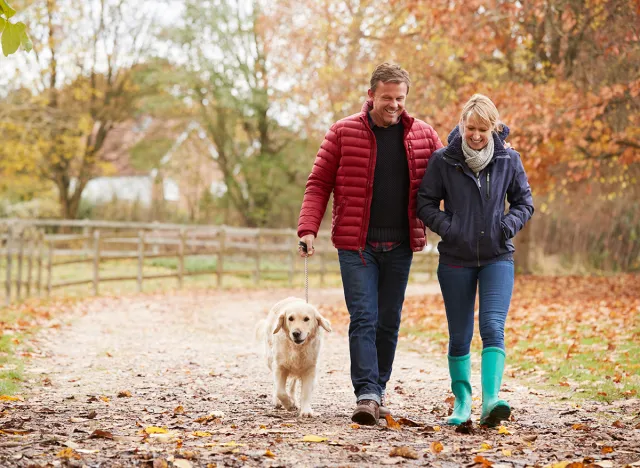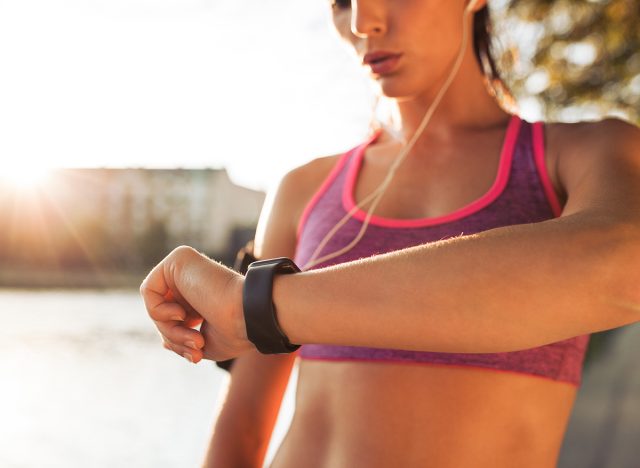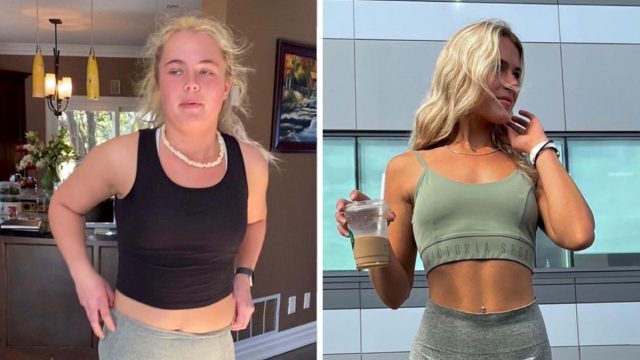The Simple Walking Routine That Helped Me Lose 40 Pounds
Can you lose a significant amount of weight just by walking every day? Yes, absolutely! Not only does walking burn fat, help lower blood pressure and improve cholesterol levels, it does wonders for your mental state as well. "You need to make it part of your routine," exercise physiologist Katie Lawton, MEd. tells Cleveland Clinic Health Essentials. "This is about adjusting your lifestyle for your health." TikTok influencer Alex.Fitt lost 40 pounds just by walking—here's how she did it.
Don't Start Big

Alex makes the important point that it's better to start off slow to build sustainable habits. You don't have to kickstart your fitness regimen with two-hour walks. Even just half an hour will make a difference to your mood and your health and encourage you to do it again the next day.
Walking After Meals

Alex says she started off her walking program by simply taking a 15-minute walk after a big meal. Research shows walking after meals can benefit blood sugar. "Exercise impacts your blood sugar quickly, often within a few minutes," Shannon Knapp, MEd, BSN, RN, CDCES, tells the Cleveland Clinic. "And over time, physical activity helps your body use insulin more effectively, decreasing the insulin resistance we often see in diabetes."
RELATED: This Is Exactly How to Lose Body Fat This Year
Walking In the Morning

Alex would start her day with a walk. "Getting outside gives you a chance to enjoy fresh air and nature," says Henry Ford Health. "Walking, like any form of exercise, reduces stress and anxiety. You'll start the day with a positive attitude, better able to manage challenges during the day."
Long Walk After Dinner

Alex would save her long walk for after dinner, which studies show is very beneficial. "The closer we get to the evening, the less efficient our bodies are at using insulin to deal with blood glucose, making it harder to keep blood glucose levels healthy," Dr Evelyn Parr from the Australian Catholic University's Exercise and Nutrition Research Program tells the Sydney Morning Herald. "Yet this is when we have our biggest meal of the day."
Smaller Waist

Alex says the biggest difference she noticed from walking was in her waist. "The faster, farther and more frequently you walk, the greater the benefits," says the Mayo Clinic. "For example, you may start out as an average walker, and then work your way up to walking faster and walking a mile in a shorter amount of time than an average walker, similar to power walkers."
Using Technology

Alex was thrilled the first time her watch buzzed when she hit 10k steps. Research shows people who track their fitness tend to be successful. "We've seen this rise of digital health tools in the last decade, and they provide a great way for people to access interventions to better their health," Michele Patel, PhD, tells Stanford Medicine.
10,000 Steps a Day

No matter how long or short her walks, Alex always aims for 10,000 steps every day. "Evidence suggests that accumulating up to 10,000 steps per day is helpful for reducing chronic conditions such as cardiovascular disease, type 2 diabetes, and some forms of cancer," John M. Jakicic, Ph.D, tells University of Kansas Medical Center. "And more recent evidence supports the benefits of reducing the risk of dementia."
💪🔥Body Booster: Start slow and steady to build lasting habits. Even 10 minutes will make a difference.
@alexx.fitt Step by step walk it off #walking #weightloss ♬ original sound – alexx.fitt





